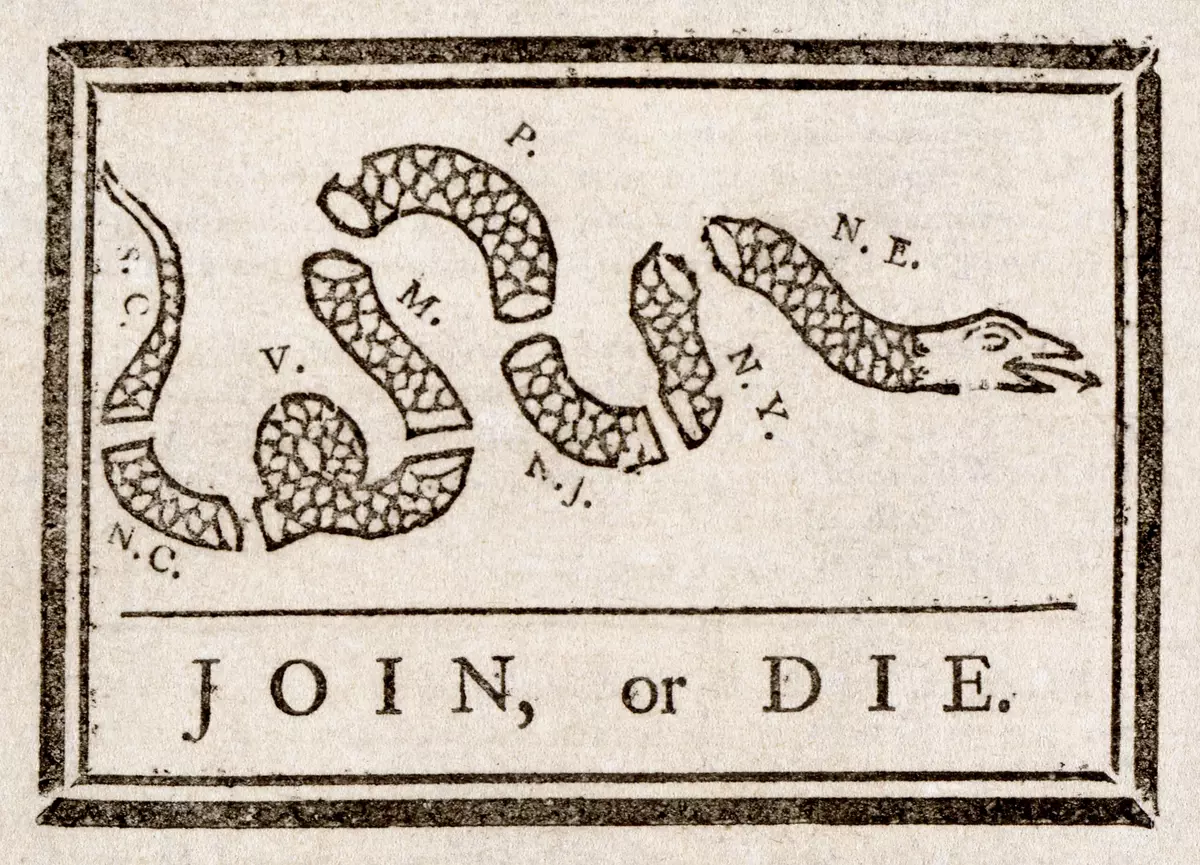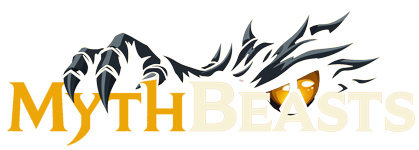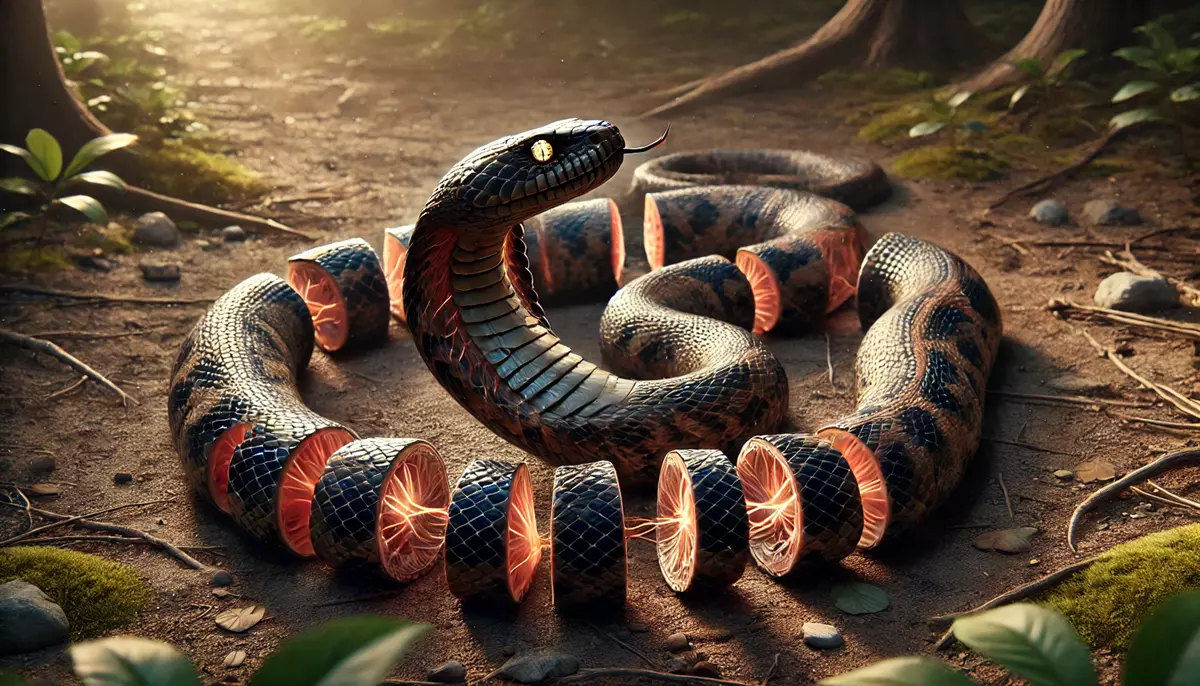The Joint Snake is a legendary serpent from North American folklore, particularly within Native American traditions and early colonial mythology. This strange creature possesses a unique ability: when severed, it can reassemble itself, making it nearly impossible to kill. Stories of the Joint Snake circulated among indigenous tribes and European settlers, fueling superstitions about the resilience and supernatural qualities of snakes.
This creature represents themes of regeneration, trickery, and the enduring power of nature. It has been described as a long, segmented serpent, capable of detaching parts of its body and snapping them back together at will. The Joint Snake appears frequently in Native American oral traditions, cautioning hunters and travelers against underestimating the wild forces of the land.
Despite its mythical nature, the Joint Snake continues to inspire cultural references in modern storytelling. It has been linked to the natural phenomenon of snake movement, cryptozoological theories, and even contemporary pop culture interpretations of self-healing creatures.
History/Origin
The origins of the Joint Snake trace back to Pre-Colonial North America, where indigenous tribes revered and feared serpents for their mystical qualities. Native American cultures frequently depicted snakes as symbols of transformation and renewal, often linking them to creation myths and cosmic forces.
Early accounts of the Joint Snake emerged from oral traditions, particularly among tribes in the southeastern and central United States. These tales describe a strange serpent that, when attacked, would break apart only to reform moments later. Some versions of the story depict the creature as a trickster, deceiving hunters by pretending to die before escaping.
During European colonization, settlers encountered these stories through interactions with indigenous communities. Colonial folklore from the 18th and 19th centuries documented reports of “snakes that would reattach their severed bodies.” In one of the earliest written references, a frontiersman in the 1700s claimed to have witnessed a snake reassembling itself after being struck with a hatchet.

A Cherokee myth describes the Joint Snake as a guardian of the forest, capable of reforming after injury as a punishment to those who harm nature. This aligns with broader Native American beliefs that viewed animals, especially snakes, as connected to spiritual and ecological balance.
“The legends of the backwoods speak of a serpent that, when cleaved, pieces itself anew, eluding death itself. Whether myth or truth, such a tale speaks to the endurance of nature’s design.” (19th-century naturalist’s journal)
European settlers, fascinated and sometimes fearful of such folklore, absorbed these myths into their own superstitions about snakes. These beliefs contributed to snake-related myths that persisted well into the 20th century.
Name Meaning
The name “Joint Snake” refers directly to the creature’s alleged ability to break apart and reconnect at will, much like a jointed structure. The term likely comes from early colonial descriptions of the phenomenon, where travelers and frontiersmen interpreted the snake’s behavior as a supernatural ability.
There is no known indigenous name recorded for the Joint Snake, as the tale was predominantly an oral tradition among Native American tribes. However, similar myths exist in Cherokee, Creek, and Choctaw folklore, where snakes play roles in trickster or spirit-based stories.
“A serpent that does not die, that does not break, that finds its pieces and returns. The earth will not take it, nor will the blade.” (translated excerpt from a Cherokee legend)
This aligns with the common theme of regeneration and endurance found in Native American snake mythology.
Appearance
The Joint Snake resembles a long, slender serpent with a segmented body. It is usually described as black or brown, with a sheen that makes it appear like living metal or hardened wood. Some variations claim that when cut, the pieces move independently before reconnecting, almost as if magnetically drawn together.
Settlers who claimed to have encountered the creature often mistook it for common North American snakes, such as the Eastern Kingsnake or the Coachwhip snake, which have long, jointed-looking bodies. However, the supernatural ability to separate and reform is unique to the legend.
Background Story
A recurring myth about the Joint Snake tells of a hunter who encounters a seemingly normal snake on the forest floor. Thinking it an easy target, he strikes the snake with his knife, only to witness something horrifying. The snake’s body splits apart, but rather than dying, the severed sections wiggle and reconnect, leaving the creature unharmed.
A version of this tale recorded in Cherokee oral tradition describes the Joint Snake as a guardian spirit of the woods. It warns against needlessly harming nature, as the snake serves as an eternal reminder that nature cannot be truly destroyed.
“Strike the serpent once, and it will return. Strike the serpent twice, and it will never leave.”(translated Cherokee proverb)
Other versions tell of travelers attempting to capture the Joint Snake, believing it to possess magical properties. Some claim the snake’s skin could be used for healing purposes, while others feared it as an omen of bad luck or trickery.
Famous Folklore Stories
The Hunter and the Reassembling Serpent
In the folklore of the Southern United States, a tale speaks of a hunter who, while traversing dense woodlands, encountered an unusual snake basking in a sunlit clearing. Intrigued by its peculiar appearance, he decided to capture it. Drawing his knife, he swiftly severed the serpent into multiple pieces.
“The joint snake was a powerful symbol that helped Africans endure and resist the social and cultural impact of slavery.”
To his astonishment, each segment of the snake began to wriggle independently, and before his eyes, the pieces reassembled seamlessly, restoring the creature to its original form. The hunter, both amazed and fearful, retreated, sharing his extraordinary encounter with his community. This story underscores the themes of resilience and the mysterious regenerative powers attributed to the joint snake in regional folklore.
The Farmer’s Bewitched Blade
Another tale from American folklore recounts the experience of a farmer who, while working his fields, stumbled upon a joint snake. Recalling local legends, he decided to test the myth and severed the snake with his plowshare. As expected, the creature’s segments began to reassemble.
“Supposedly, the joint snake can break itself (or be cut) into pieces and will reassemble itself.”
Curious, the farmer placed his pocket knife between the severed sections before they could rejoin. To his amazement, when the snake reassembled, his knife had become part of its body, fused where the cut had been made. The snake slithered away, now bearing the farmer’s blade as a permanent feature. This narrative highlights the mystical properties attributed to the joint snake and serves as a cautionary tale about interfering with nature’s enigmatic creatures.
The Unkillable Serpent of African American Lore
In African American folklore, particularly during the era of slavery, the joint snake emerged as a potent symbol of indomitable spirit and resistance. Enslaved Africans, drawing from their rich cultural heritage, told stories of a snake that, no matter how many times it was cut or dismembered, would always reassemble and continue undeterred.
“This meaning reinforced the African belief that snakes represent great life-giving powers, even to the point of reincarnation.”
These tales served as metaphors for the resilience and enduring hope of the enslaved people, symbolizing that despite the attempts to break their spirit, they would always find a way to persevere and reclaim their identity. The joint snake, in this context, became more than a mythical creature; it was a beacon of strength and an emblem of the unyielding quest for freedom.
Cultural Impact
The Joint Snake has significantly influenced various cultural narratives, particularly in the Southern United States. Its legend has been used to explain unusual snake sightings and behaviors, embedding itself into local folklore as a symbol of resilience and mystery. The creature’s reputed ability to reassemble has also been interpreted as a metaphor for regeneration and the enduring spirit of nature.
Similar Beasts
The legend of the Joint Snake shares similarities with other mythical creatures across different cultures:
Hoop Snake: Another creature from American folklore, the Hoop Snake is said to grasp its tail in its mouth and roll like a wheel. While differing in behavior, both myths involve serpents with extraordinary abilities.
Glass Snake: Often mistaken for a snake, the Glass Lizard can detach its tail to escape predators. This real reptile’s ability might have inspired or reinforced the Joint Snake legend.
Religion/Ritual
In Native American traditions, snakes often symbolize fertility, rebirth, and the cyclical nature of life. The Joint Snake, with its ability to reassemble, embodies these themes, serving as a reminder of nature’s resilience and the interconnectedness of all life forms. While specific rituals centered around the Joint Snake are not well-documented, the creature likely played a role in broader cultural narratives that emphasize respect for nature and its mysteries.
Scientific or Rational Explanations
The Joint Snake legend may have roots in real-world observations of certain reptiles:
Glass Lizards: These legless lizards can shed their tails when threatened. The detached tail continues to move, potentially giving the impression of a creature breaking apart and reassembling. This natural defense mechanism might have been misinterpreted, leading to tales of the Joint Snake.
Snake Regeneration: While most snakes cannot regenerate lost body parts, some reptiles exhibit limited regenerative abilities. Observations of injured snakes surviving severe injuries might have contributed to myths about self-repairing serpents.
Modern Cultural References

“Join, or Die” Political Cartoon: Benjamin Franklin’s 1754 cartoon features a segmented snake representing the American colonies. While not a direct depiction of the Joint Snake, it symbolizes unity and resilience, themes central to the Joint Snake legend.
Conclusion
The Joint Snake remains a fascinating element of North American folklore, embodying themes of resilience, mystery, and the supernatural. Its legend, rooted in cultural narratives and possibly inspired by real-world observations, continues to captivate and inspire, reflecting humanity’s enduring fascination with the natural world and its mysteries.









